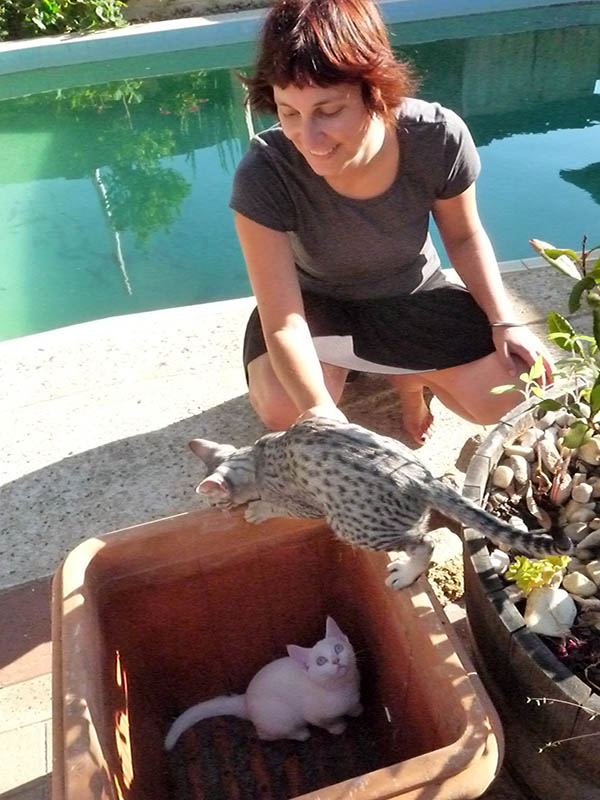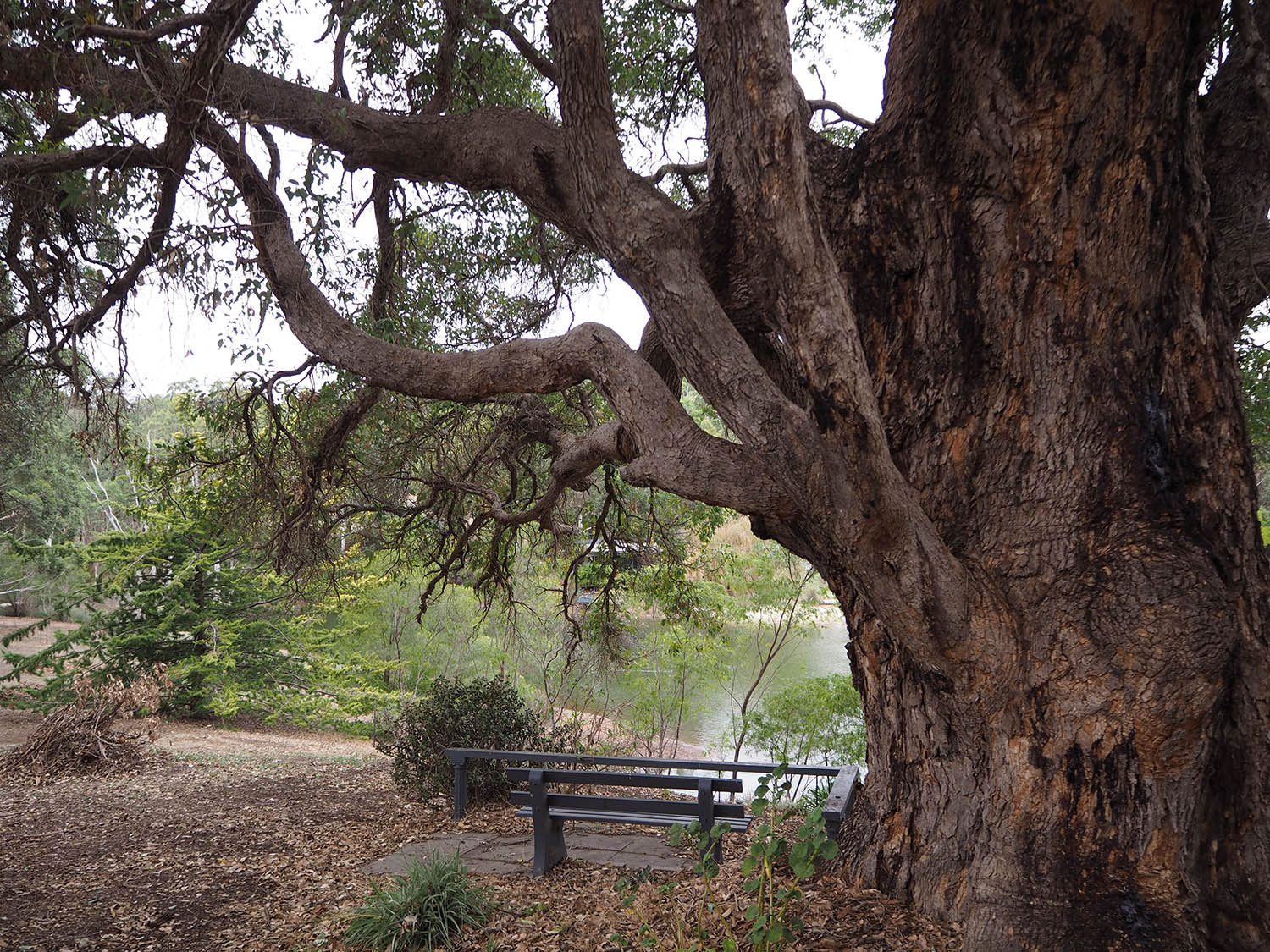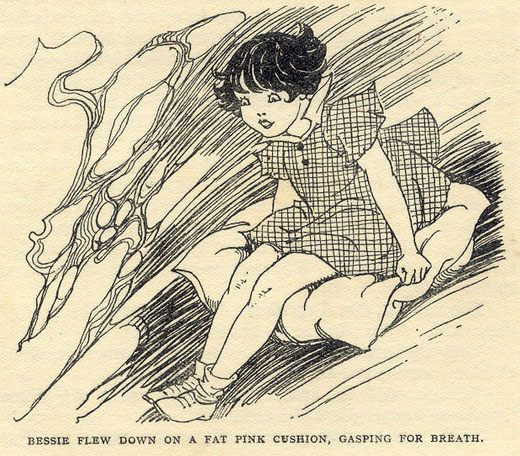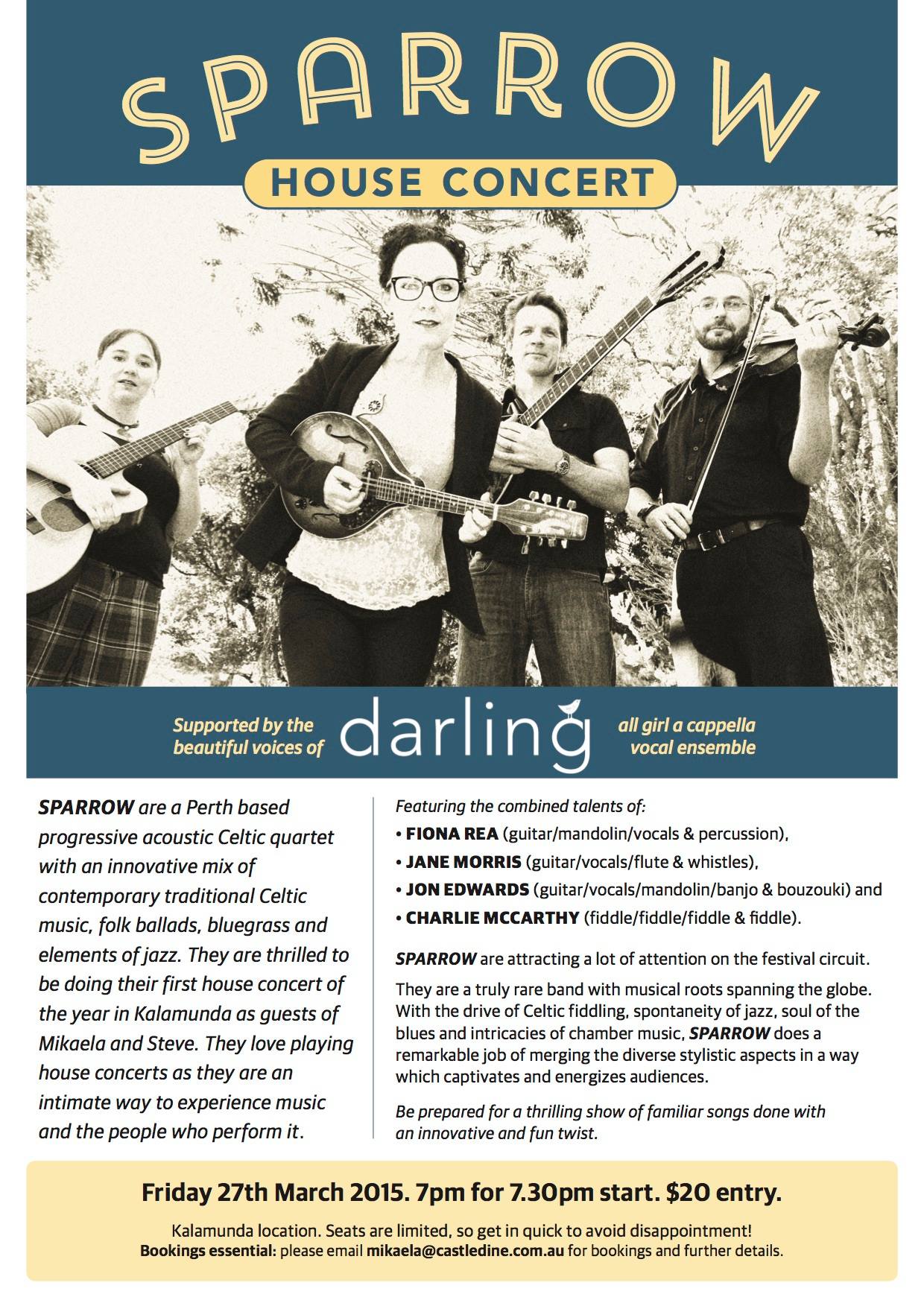My best friend flew up from Brownies to Guides when we were about 11 years old. I wasn’t a fan of Brownies – the one time I went along they’d seemed to spend all their time doing what I considered frightfully ‘girlie’ things. Guides, on the other hand, apparently went camping and did lots of outdoor activities, which all sounded much more fun. So I joined up. The only downside turned out to be that I had to polish my shoes on Friday afternoons before going to meetings, but I soon learned to offset that by not polishing them on Friday mornings before school 🙂
In no time I’d mastered reef knots, sheet bends and that most useful of knots, the bowline. I learned basic first aid and was taught how to raise, lower and fold a flag. We did indeed go camping and we also played endless variations of Kim’s game. In the version we played, 24 different objects were placed on a tray and covered with a cloth. The items were then revealed to the player for a limited time, say one minute, after which they were covered up again and the player was asked to list as many as s/he could remember. It was fun – and good training in observation and recollection. We also learned what has turned out to be a most useful skill, namely Scout’s pace – a method of covering distance fairly quickly by alternating running and walking 50 paces. This gives one time to recover somewhat in-between bursts of running and is much more fun that jogging or running flat out!
One of the most interesting aspects of my time as a Guide was getting involved in the international pen pal scheme. Our troop established contact with a troop in Canada and a few of us started corresponding with girls of similar ages in Toronto. This wasn’t my first encounter with correspondence, as my sister was living in Angola at the time and I would occasionally exchange postcards with her. In both cases I learned a little about how and where other people lived and, as importantly, started to write for pleasure.
In later years, I began to keep journals, corresponded with friends via snail mail and email, wrote a lengthy work of narrative non-fiction and, more recently, a memoir. Last year I job-shared for a while and ended up with my other half (of the job share) as an office pen pal. We left descriptive and informative notes for each other so that we would both know what needed to be done. It was surprisingly entertaining and I found that I missed that more than any other part of the job when I left.
All of these writing experiences have been influenced by those early pen pal days, by learning how to express myself in ways that a reader might find interesting. I was therefore delighted to receive a card in the mail a few weeks ago, sent to me by a friend who also lives here in Perth. She chose to post a physical card rather than send an email or a text message. It was a lovely surprise, as was the follow up package I received a couple of weeks later. This contained an eclectic range of goodies, from a vintage magazine to a beautiful drawing of a teacup. The magazine includes a pattern for a knitted poncho and a recipe for a no-bake Pavlova. Win!
I’ve sent a physical reply (in the mail) – and have created this to augment it. Enjoy, dear Pen Pal 🙂
This week a friend and I managed to find a last minute booking for what was described as a “quaint, rustic cottage” next to a lake in Bridgetown. We jumped at the chance and headed off for a few days of sorely needed downtime at the end of a very busy term. The plan was to rest, but also do some writing, photography, drawing and (most importantly) chatting.
I’d been itching to try out my new camera since my birthday, so as soon as we were settled in our distinctly rustic abode I set out to walk around the lake and find something photo-worthy. I soon came across a derelict footbridge (snap), a rose arbour that had fallen into disrepair (no snap, too sad), a very orderly row of fairly young gum trees side by side with a lone fig tree (snap, snap), and a rather palatial kid’s cubby house (snap). All of these were interesting, but none of them stirred me more than superficially.
Then I saw it – a huge river red gum, standing head and shoulders above all the other trees. It was glorious and immediately evocative of a much loved childhood story. Indeed, the first thing sprang to mind as I gazed up at it was ‘It’s the Faraway Tree!’ I could easily imagine Moonface, Silky, the Saucepan Man, Dame Washalot and the rest of characters that paraded through my highly imaginative early childhood hiding somewhere in its branches.
Our host had placed a bench under the tree and from that vantage point I could gaze up at the enormous trunk as I reminisced. I remembered wishing that I had a tree with a slippery slide built into it so that I could whizz down on a tasselled cushion. What fun that would be!
I found I couldn’t quite stop myself from glancing up at the top of the tree as I thought about the lands that drifted across the top of the Faraway Tree, just in case… Like the storybook version, this is a tree that cries out to be climbed, for children to adventure into, for artists to photograph and paint, and for arboriculturists to conserve. It’s quite magnificent and the childhood memories that it stirred up made me smile each time I looked across the lake at it over the next few days.
Although I’d remembered the names of all the magical characters in the Faraway Tree books, my memory referenced the human characters generically as the children. Out of curiosity, I looked it up as soon as a Wifi connection was to hand and the second or third ‘hit’ I got was a link to the Enid Blyton Society. This provided me with a plethora of information on all things Blyton, including the names of the children in the series (Jo, Fanny, Bessie) and some examples of the lovely illustrations and cover art from the early print runs.
I spent ages pouring over the covers and jumping between examples of some of my favourite early reading matter. Much to my delight I found a listing for the Five Find-Outers Mystery Series. I read these books with alacrity at much the same time as the Faraway Tree series, but subsequently never found the books again. In the intervening years I’ve asked numerous people whether they’ve read them, but no one I know had even heard of the series. Most people went so far as to ask whether I meant the Famous Five, Adventurous Four or even the Secret Seven! So the sense of vindication was actually quite ridiculously strong and decidedly childlike when I discovered that the Finder-Outers and little Buster the dog really do exist in Blyton-land and that I hadn’t made them up.
The combination of the real and imagined trees, the photographs I took and the information and images on the website has been like catching glimpses of a kaleidoscope of my childhood, of a fragmented land that seems to move further away each year. It’s brought them closer together and has made me want to climb more trees and to hunt for adventures – or perhaps it was simply relaxing for a few days that did that.
We attended our first ever house concert this weekend – and what a joy it was! Mikaela and Stephen Castledine hosted a very enthusiastic crowd of over 50 people, who filled their house with laughter and song on Friday evening.
The draw card was Sparrow – a delightful progressive acoustic Celtic quartet. Supporting them was Darling, a local ten-piece all-girl acappella group.
So what exactly is a house concert? More than anything else it’s an opportunity to enjoy music in an intimate setting, usually in someone’s home or garden. It’s an informal and very sociable event, with most people being friends or acquaintances of the hosts.
For an event of this nature to work, there are any number of logistics to consider, ranging from the capacity of the house to the selection of musicians and what their fee might be. Then there’s whether or not to have a lead-in act, how to publicize the concert, how and where to sell tickets and the complicated juggling act involved in getting the crowd seated in time to start the music.
The Castledines managed all of this with panache. Although house concerts often don’t provide much in the way of sound systems, thanks to a family friend this one was completely plugged in. There was only one very brief power outage, but Sparrow had been warned that this might happen and simply carried on ‘un-plugged’ without breaking stride, much to the delight of all. Most people took along food/drink to share, which added to the sociability of the evening, as did the very generous catering and outgoing manner of the hosts.
Seeing just how much work they put into preparing for the concert, it would be easy to wonder why they would even consider hosting such an event. The answer was there on the night, however. The happiness quotient in the room was very high, both on the part of the (very interactive) audience and the musicians. It was a pleasure to listen to Darling, who will undoubtedly go on to greater things. Fiona Rea, Charlie McCarthy and Jon Edwards from Sparrow seemed delighted with the response that they received from the crowd. Apparently we (the audience) have lovely ‘fronts of heads’ – this from Fiona, who said that they often play in pubs and mostly to the backs of people’s heads, which are not nearly as responsive 🙂
I could blather on ad nauseum about the wonders of finding a bouzouki player in a Celtic band, about the extraordinary fiddle playing of Charlie McCarthy and the joy of Fiona’s vocals, but instead I’ll just say that I take my hat off to the hosts and the performers – and can’t wait for the next one!
When you were a kid, did you ever wish for something? I mean really, really wish for something – wanting it so badly that your teeth hurt, that you thought about it all the time, that it felt like nothing else mattered? I’d guess most kids do and that the things they long for are as varied as the day is long.
What I really wanted was a bicycle. I had a push scooter, which had served me well, but I was eight years old and felt it was time for a proper bike. I longed for one like my older brothers had, one that was all mine. It turned out that Santa (aka my Mum) was paying close attention, because that Christmas there was a bike under the tree and it had my name on it. It was exactly – exactly – as I’d imagined it. It was shiny and new and black and said Raleigh on the side. It had back pedal brakes and a soft saddle and, most importantly, there were no trainer wheels anywhere in sight. I doubt that any Christmas before or after brought with it such a rush of joy, of fulfilled expectation and delight.
As a parent I duly became Santa’s minion and kept my ears pealed, wanting to be able to create for my children that same sense of wonder and joy. I wanted to be perceptive enough to understand what they really wanted, the things that were core desires rather than whimsical interests in the popular toy of the moment. In many instances I was successful, but in one there was an epic fail.
By the time my daughter was almost six years old she had clearly articulated her firm desire to have a cat of her own. Specifically, she asked if she could get a kitten for her sixth birthday. After giving the logistics of this some thought – we already had three dogs, two guinea pigs and a male parental unit with a cat allergy – I came to the conclusion that it simply wasn’t practical. To soften the blow I suggested that we waited until she was ten, by which stage she would be old enough to feed and look after the cat herself and it wouldn’t just become yet another pet for me to maintain. This sounded reasonable to her and we agreed to do that.
What I didn’t take into account was her tenacity or her patience – she never forgot. As every year passed she’d remind me that she was now one year closer to being ten – and thus one year closer to getting her kitten. She didn’t nag or whine or fuss, just reminded me – in case I’d forgotten…
What none of us took into account was that we would end up relocating from Johannesburg to Perth or that Australia has (and had) one of the strictest set of quarantine regulations in the world. To import a dog or cat into Australia at the time was not only eye wateringly expensive, it also involved lengthy quarantine periods, both pre-export in South Africa and after arrival in Australia. This meant no kitten after all, since it would have to be rehomed when we emigrated – and that, I was told, was definitely not an option.

In the end it took a total of 27 years for the kitten dream to be realised – and it’s been a bittersweet joy to watch my no-longer six year old with her kittens, knowing that she’s missed out on so many years of pleasure, so many years of purring. I continue to marvel at her capacity as a child to understand and accept my inability to live up to that one promise, so glibly made and so tenaciously remembered.
Does delayed gratification enhance the pleasure one takes in the rewards later? It turns out that the capacity to delay gratification is widely considered to result in more successful outcomes in one’s personal and professional life, in health and in finances. It develops willpower – or what my Mum would’ve called strength of character. This does make me wonder what might have happened if I’d had to wait that many years for my bike…









